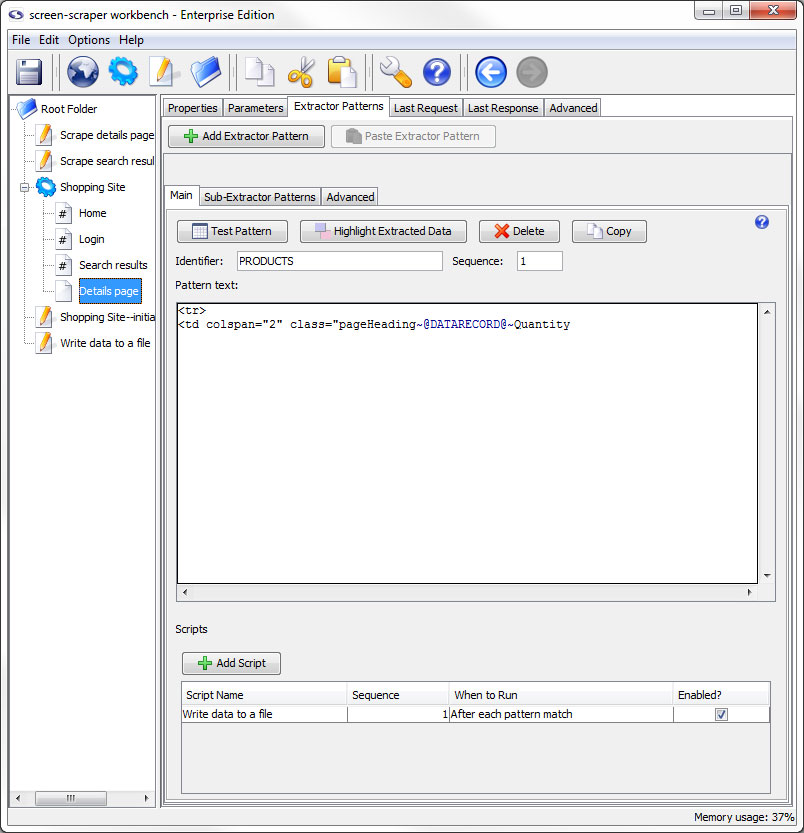Extractor Pattern: Main tab

Main Tab
- Test Pattern: Opens a DataSet window with the results of the extractor pattern matches applied to the the HTML that appears in the last response tab.
- Highlight Extracted Data (professional and enterprise editions only): Opens the last response tab and places a colored background on all text that matches to the extractor tokens.
- Delete Extractor Pattern: Deletes the current extractor pattern.
- Copy Pattern (professional and enterprise editions only): Copies the extractor pattern so that it can be pasted into a different scrapeable file.
- Identifier: A name used to identify the pattern. You'll use this when invoking the extractData and extractOneValue methods.
- Sequence: Determines the order in which the extractor pattern will be applied to the HTML.
- Pattern text: Used to hold the text for the extractor pattern. This will also include the extractor pattern tokens that are analogous to the holes in the stencil.
- Scripts: This table allows you to indicate scripts that should be run in relationship to the extractor pattern's match results. Much like other programming languages, screen-scraper can invoke code based on specified events. In this case, you can invoke scripts before the pattern is applied, after each match it finds, after all matches have been made, once if a pattern matches, or once if a pattern doesn't match. For example, if your pattern finds 10 matches, and you designate a script to be run After each pattern match, that script will get invoked 10 separate times.
- Add Script: Adds a script association to the extractor pattern.
- Script Name: Specifies which script should be run.
- Sequence: The order in which the script should be run.
- When to Run: When the scrapeable file should request to run the script.
- Enabled: A flag to determine which scripts should be run and which shouldn't be.
scraper on 07/16/2010 at 5:16 pm
- Printer-friendly version
- Login or register to post comments
